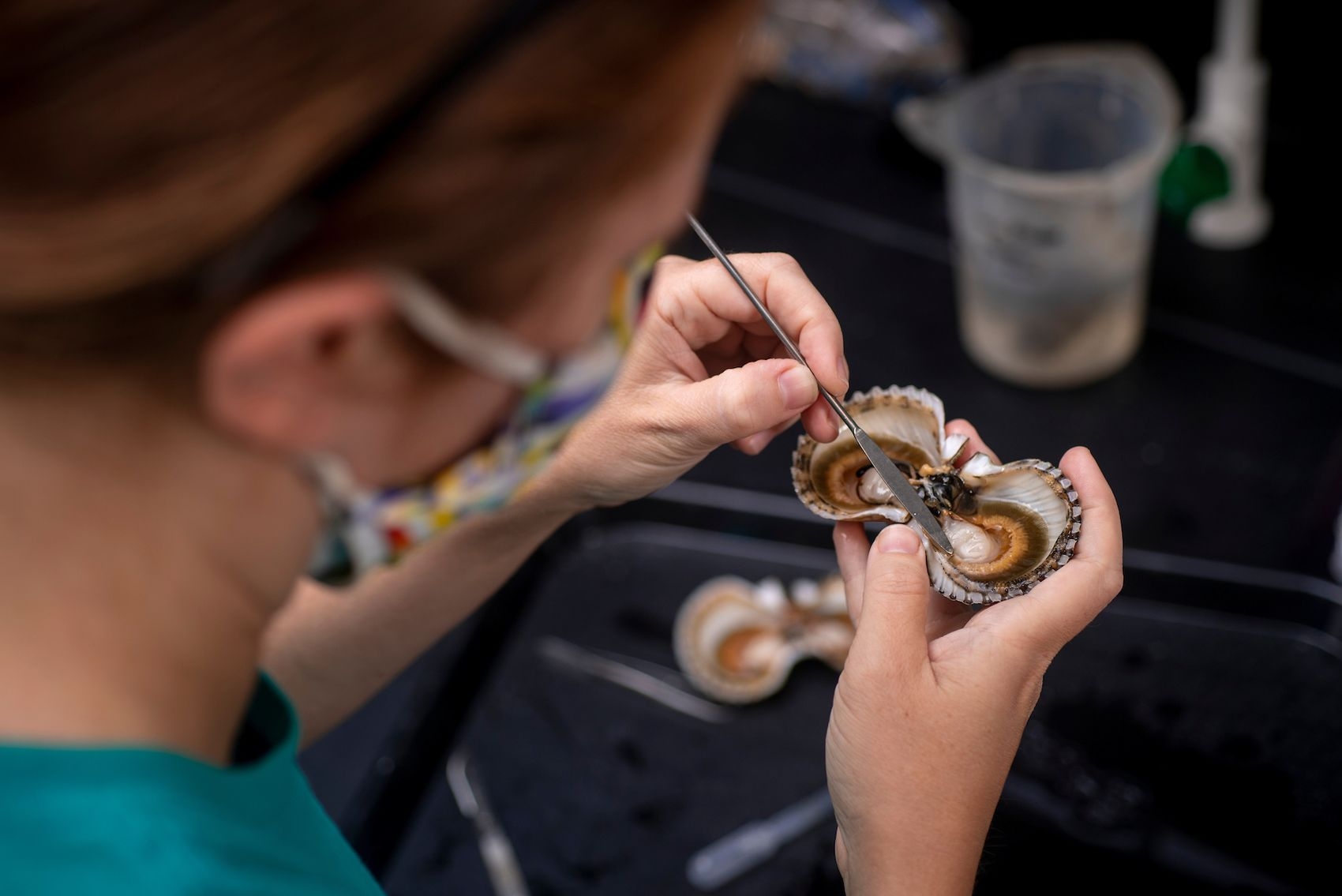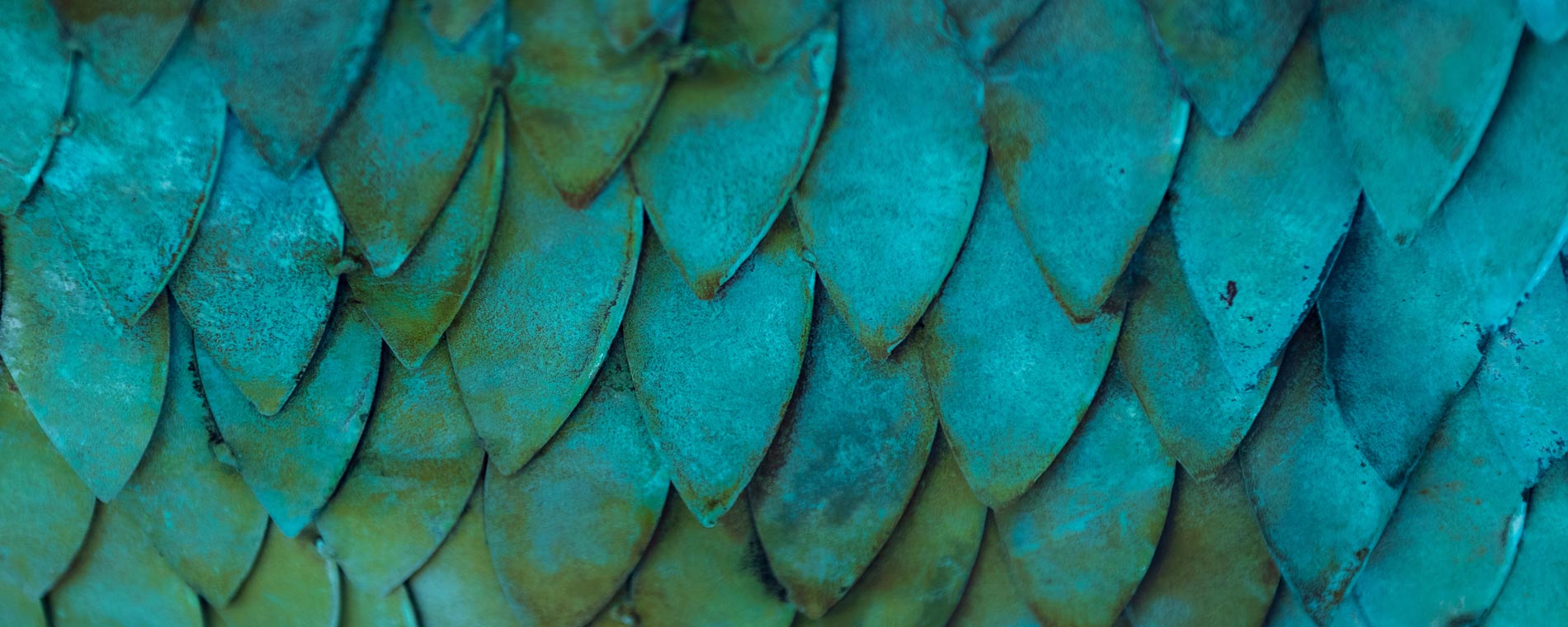UNCW Researchers Identify Previously Undescribed Trematode

Photo: Jeff Janowski/UNCW
A team of UNCW researchers has identified a previously undescribed species of trematode parasite infecting native bay scallops in North Carolina. The findings outlining the parasite’s basic biology and impacts on its host are published in the journal Aquaculture.
The parasite was first discovered in 2012 by Ami E. Wilbur ’85, a professor in the Department of Biology and Marine Biology, who has been studying scallops for 30 years.
“It’s visible when you open a scallop that’s infected. You can see it,” said Julia Buck, an assistant professor in the same department who started working with Wilbur on identifying the specifics of the parasite when she was hired at UNCW in 2019. She quickly determined that the parasite, which infects the afferent vessel of its host’s gills, was a trematode. Sequencing the DNA and comparing it to others in GenBank, a database of publicly available genetic sequences, revealed its closest known relative was part of a recently described genus found in Australia, Saccularina.
Lead author Hailea H.F. Boggess ’23MS performed surveys along the North Carolina coast to determine prevalence of the parasite, discovering that around 20% of scallops are infected – 18% of those in the wild and 22% of caged scallops. It has also been found in scallops in the Gulf waters off Florida, but has not been seen north of North Carolina, Buck said.
The parasite is bad news for native bay scallop populations in North Carolina, which are already stressed. “Everything from red tides to destruction of seagrass habitat, overfishing, trophic cascades where there are more predators around that are eating them, and so on and so forth. And this is just another hit,” Buck explained.
The facts that the parasite infects such a popular species and is obvious to the naked eye, but was not seen before 2012, mean it is likely an introduced species. It uses the bay scallop as a first intermediate host, but later hosts in its lifecycle remain unidentified, pending further research.
Other named authors on this paper include Carolina Preister ’01, ’03MS, ’12Ph.D., senior lecturer in the Department of Biology and Marine Biology; Hannah McCurry ’22; D. Wilson Freshwater ’85, research specialist at the Center for Marine Science; Robin L. Varney, a former post-doctoral researcher at UNCW now at the Virginia Institute of Marine Science; and Tal Ben-Horin at N.C. State University.
Financial support for the work was provided by North Carolina Sea Grant, and this is just the first in a series of papers the researchers are preparing for publication.
“To find something new in a species that people care a lot about, something iconic like a bay scallop in North Carolina,” Buck said, “that won’t happen again in my career.”
This article has the following tags: CSE Research & Innovation Biology & Marine Biology Research & Innovation myUNCW - Faculty & Staff CSE - College of Science & Engineering CSE Students & Alumni


